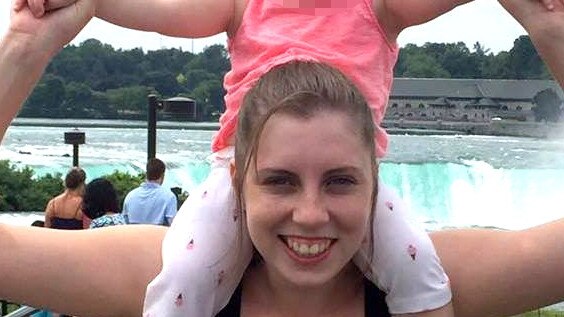Gold Coast small funding portion despite soaring number of women asking for help
More Gold Coast women apply for domestic violence orders against their partners than any other part of Queensland. But the city only get’s a small portion of the state’s funding.
Gold Coast
Don't miss out on the headlines from Gold Coast. Followed categories will be added to My News.
- Three simple words that are failing Gold Coast women
- Body in chest: woman dead for a week
- EXCLUSIVE: ‘Kelly was scared for her and her children’s lives’
MORE Gold Coast women apply for domestic violence orders against their partners than any other part of Queensland.
The shock figures come after it was revealed last week the Gold Coast would only receive about $63,000 from a $2.5m state government funding pool.
Domestic violence prevention advocates are demanding to know where the money is being spent.

The Premier’s office admitted itself on Friday that only five per cent of the $152m to tackle violence against women this financial year was allocated to the Gold Coast.
About one in 10 domestic violence order (DVO) applications made in the 2019-2020 financial year across the state came from the Gold Coast, figures from the Queensland Magistrates Court show.
More than 2600 applications for DVOs were made in the Southport Magistrates Court in that financial year, leading to magistrates to put in place more than 4390 DVOs.
That means more than 365 domestic violence orders were put in place each month.
The discrepancy in funding has led to domestic and family violence advocates calling for an audit of funding.
Gold Coast Centre Against Sexual Violence director Di MacLeod said: “It’s time for an audit into where we spend and where we need to spend.
“Part of the solution (to preventing domestic violence deaths) is having money spent in the right direction and a focus on deterrence.”
Ms MacLeod said the government also needed to consider the types of services that funded.
In the recent funding only about three per cent of the money went towards sexual violence prevention programs and services.

“We know what sexual violence is a very big component of domestic violence,” she said.
“The high-risk offenders are using all types of violence.
“They are not just saying you can’t wear pink or you can’t go there – they are often physically intimidating and using sexual violence as a weapon.”
For the past 10 years, Southport court has regularly received the largest portion of domestic violence order applications in the state.
The most application were received in the 2015-2016 financial year following the horrific deaths of Tara Brown and Karina Lock at the hands of their former partners.
That year, the court received 3516 order applications and magistrates issued 5866 protection orders.
A spokeswoman for Premier Annastacia Palaszczuk said $555m had been spent targeting domestic and family violence statewide since 2015.
FULL DIGITAL ACCESS: $1 A WEEK FOR THE FIRST 12 WEEKS
“In 2020-21, we invested more than $152m in tackling violence against women,” she said.
“Almost $8m of this current budget has been allocated to Gold Coast support services, with more than $2.3m invested in Southport for specialist domestic and family violence court facilities.”
The spokeswoman said the Palaszczuk government had implemented all 140 recommendations of the Not Now, Not Ever Report and launched a 10-year domestic and family violence prevention strategy.
“Domestic and family violence is an insidious scourge on our society and incredibly complex to tackle – but as a government we are tackling it head on,” she said.
“We have invested more to prevent it than any other government in Queensland’s history.”
She said the state government was committed to make change with the independent Women’s Safety and Justice Taskforce on domestic and family violence headed by Court of Appeal Judge Margaret McMurdo AC.
How the Gold Coast Domestic and Family Violence Court works
EACH morning the first level of the Southport courthouse is an exercise in controlled chaos.
This is the floor that houses the two domestic and family violence courtrooms.
It is where domestic violence orders are put in place, where perpetrators are to held account for breaches of those orders and where criminal acts involving domestic violence are heard.
It is a mezzanine floor and the waiting room can be seen from the lobby of the ground floor.
Every day the waiting room is packed.
That does not take into account the private waiting room, which provides a space for where domestic and family violence survivors can wait without coming face-to-face with their tormentors.
When the morning starts court staff direct people to where they need to go, support services offer comfort and lawyers see their clients.
Police prosecutors will get out of the lift with trolleys full of boxes oozing files needed for the day’s matters.
Those prosecutors require additional training to be able to appear on matters in the Domestic and Family Violence Court.
Inside each of the courtrooms a specialised magistrate presides over those matters. These magistrates will rarely sit in the general Southport Magistrates Court.
A majority of the matters will be heard behind closed doors, excluding the general public in order to give privacy to the domestic and family violence survivors.
The court will only open to hear criminal matters that feature the aggravation of domestic violence.
As the remaining of the magistrates courts begin to finish work for the day it is not unusual to still see a number of people waiting outside the courtrooms while the magistrates make their way through their huge workloads.
The statistics
Southport Domestic and Family Violence Court
Number of DV applications
2019-2020 - 2063
2018-2019 - 2967
2017-2018 - 2945
2016-2017 - 3346
2015-2016 - 3516
2014-2015 - 2681
2013-2014 - 2377
2012-2013 - 2156
2011-2012 - 2146
2010-2011 - 2353
Number of DV protection orders
2019-2020 - 4391
2018-2019 - 5430
2017-2018 - 4867
2016-2017 - 6345
2015-2016 - 5866
2014-2015 - 3768
2013-2014 - 3399
2012-2013 - 3164
2011-2012 - 3819
2010-2011 - 3977
Per cent of state applications
2019-2020 - 9.19%
2018-2019 - 9.79%
2017-2018 - 9.69%
2016-2017 - 10.43%
2015-2016 - 10.91%
2014-2015 - 10.02%
2013-2014 - 9.40%
2012-2013 - 9.06%
2011-2012 - 9.74%
2010-2011 - 10.53%


